Which Is Best For A Warehouse: Ball Conveyors Vs. Roller Conveyors
In the complex world of manufacturing, making a decision on ball conveyors vs. roller conveyors for a warehouse is often more intricate than it appears. Both conveyor systems guarantee efficient operations by reducing manual labor and boosting productivity. However, each design has unique features and benefits, making them suitable for distinct applications. Among the various types of roller conveyors, metal rollers are particularly noteworthy for their durability and robustness, especially when dealing with heavy or large goods. Understanding these differences is key to making the optimal choice for your warehouse. This guide dives deeper into the distinguishing characteristics between these two warehouse essentials. Our objective is to help you make an informed decision that perfectly aligns with your needs and enhances your warehouse operations.
Understanding Conveyor Systems: A Comprehensive Look
Before we delve into the specifics of ball conveyors vs. roller conveyors for a warehouse, it’s important to take a step back and understand the broader category they fall under – conveyor systems. These systems are the lifeline of warehouses, providing an efficient, automated method for moving goods from one point to another, transforming how warehouses operate.
The Role of Conveyor Systems
Conveyor systems are pivotal to the operations within a warehouse. They transport goods across different areas, eliminating the need for manual labor. It enhances the speed of moving goods while reducing the risk of injury and human error. By automating the heavy lifting, conveyor systems free up your staff to focus on tasks that require human intervention, thus improving overall efficiency.
Key benefits of conveyor systems include:
- Reduction in manual labor
- Decreased risk of injury and errors
- Enhanced speed and efficiency
- Freeing up staff for other tasks

The Impact on Productivity
Productivity is at the heart of any successful warehouse operation, and this is where conveyor systems truly shine. By automating the transportation of goods, these systems allow for a more streamlined workflow. They can handle large volumes of goods in a consistent, reliable manner, ensuring your warehouse operations continue unhindered. This ability to move goods swiftly and reliably makes conveyor systems a key productivity booster in warehouse settings.
Streamlining Operations
Beyond transportation, conveyor systems play a vital role in streamlining overall operations. They ensure goods are always where they need to be, reducing delays and improving operational efficiency. By integrating modern technology, conveyor systems make tracking and managing inventory easier, improving warehouse management, and reducing stockouts or overstocking chances.
We can highlight the importance of conveyor systems in streamlining operations through:
- Improved operational efficiency
- Enhanced inventory tracking and management
- Reduction in delays
- Prevention of stockouts and overstocking
Ball Conveyors: A Detailed Overview
Ball conveyors, also known as ball transfer units, offer a unique solution for multi-directional movement. We achieve this by using a series of small balls that enable easy rerouting or rotation of goods. This unique feature makes them an excellent choice for certain warehouse applications, particularly those requiring flexibility in the direction the goods move.
Versatility of Ball Conveyors
With flexibility, ball conveyors are second to none. Their design allows for easy redirection of goods, making them an ideal choice for packaging and assembly lines, where goods often need to be moved in multiple directions. Furthermore, you can integrate ball conveyors into existing conveyor systems to create complex routing sequences, which underscore their versatility.
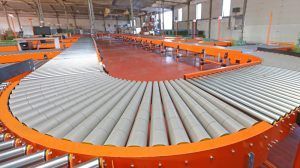
Ease of Use
Ball conveyors stand out for their user-friendly operation. Because of the minimal friction created by the small balls, goods can transition smoothly along the conveyor. This speeds up processes and reduces the likelihood of damage to the goods. Moreover, their simple operation means less training is required for staff, saving valuable time and resources.
Low Maintenance
Beyond their ease of use, ball conveyors also score high on the maintenance front. Their simple design translates to fewer parts that could break down, reducing downtime and maintenance costs. This material’s durability and low-maintenance nature make it cost-effective for warehouses, reducing the total cost of ownership over the system’s lifespan.
Roller Conveyors: Unpacking the Benefits
In contrast to ball conveyors, roller conveyors are composed of a series of metal rollers. They are useful for moving heavy or bulky items, making them popular in many warehouse settings. Here’s why you might integrate roller conveyors into your warehouse operations:
Durability: Built for Heavy Loads
One of the standout features of our roller conveyors is their durability. At Conveyor Systems & Engineering, Inc., we craft metal rollers in the 3000 Series from either chrome alloy or stainless steel. This choice of material ensures their longevity even under heavy loads.
Unlike other materials, chrome alloy, and stainless steel can withstand the wear and tear associated with carrying heavy items regularly. This durability ensures that our roller conveyors function optimally over time, reducing the need for frequent replacements or repairs.
Besides being durable, these materials are also resistant to corrosion, further enhancing the lifespan of our roller conveyors. This makes them an excellent choice for warehouses dealing with harsh conditions or handling corrosive materials.
Efficiency: Designed for Speed
Efficiency is another key benefit of our roller conveyors. Our company designs roller conveyors that prioritize speed, making them an excellent choice for warehouses with high-volume operations.
Our roller conveyors can significantly increase your operation’s throughput by enabling goods to move quickly across the warehouse. This can lead to higher productivity levels and improved bottom-line results.
In addition, the smooth surface of our metal rollers reduces friction, ensuring that goods can move along the conveyor with minimal resistance. This increases speed and reduces the amount of energy required to move goods, leading to energy savings in the long run.
Customization: A Solution Tailored to Your Unique Needs
At Conveyor Systems & Engineering, Inc., we firmly believe there is no one-size-fits-all solution for conveyor systems. Every warehouse has its unique set of challenges and requirements. Recognizing this, we have made customization a cornerstone of our services. Our company provides customized roller conveyors engineered to meet your unique needs.
Handling Various Types of Items
One of the key aspects of customization is designing systems that can handle different types of items. We can create a roller conveyor to take heavy or light items. We consider weight, size, and shape to ensure our conveyors can safely and efficiently transport your goods.
Flexibility in Conveyor Length
The size of your warehouse and the distances over which goods need to be transported play a crucial role in determining the length of your conveyor system. Whether you require a short conveyor for compact space or a long conveyor for larger warehouses, we can customize the length to fit your space perfectly. Our team will assess your warehouse layout and operational needs to determine the optimal conveyor length.
High-Speed Capabilities
In high-volume operations, speed is crucial. We’ve got you covered if you need a system that can handle high speeds without compromising safety or efficiency. We can engineer roller conveyors to move goods quickly, allowing you to keep up with demanding operational schedules.
Collaborative Design Process
Our customization process is highly collaborative. Our team will work closely with you to understand your needs thoroughly. We will consider various factors, such as goods, volume, operational speed, and warehouse layout. Based on this information, we will design a conveyor system that integrates seamlessly into your operations.
Contact us today for a custom ball or roller conveyor solution!
Ball Conveyors Vs. Roller Conveyors For a Warehouse
Implementing ball conveyors or roller conveyors in your warehouse is not a simple black-and-white choice. It requires a deep understanding of your warehouse’s unique requirements and the specific characteristics of each type of conveyor system. This decision can have far-reaching implications for your operations, affecting everything from productivity and efficiency to maintenance costs and worker safety.
Here are some crucial factors you should consider when making this important choice:
Nature of Goods: Size and Weight Considerations
One of the first things to consider when choosing between ball and roller conveyors is the nature of the goods your warehouse handles. With their sturdy design and ability to handle heavy loads, roller conveyors may be the best choice if your warehouse predominantly deals with heavy, bulky items. These systems withstand the weight of such articles without compromising performance or longevity.
On the other hand, if your warehouse requires flexibility in the movement of goods or if you are dealing with smaller and lighter items, ball conveyors might be the better choice. Ball conveyors are ideal for the flexible movement of smaller, lighter items. Additionally, ball conveyors can handle smaller items more gently, reducing the risk of damage during transit.
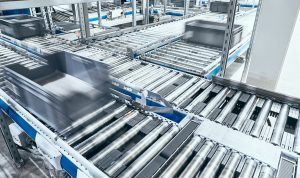
Volume: Matching Conveyor Efficiency to Operational Demand
The volume of goods your warehouse processes is another critical factor to consider. High-volume operations might benefit significantly from the efficiency of roller conveyors. These systems are ideal for warehouses that need to move a high volume of goods quickly and consistently.
In contrast, lower-volume operations could leverage the versatility of ball conveyors. These systems excel in environments where the direction of movement needs to change frequently, making them perfect for warehouses with more complex routing needs or lower throughput requirements.
Maintenance: Balancing Simplicity and Regular Checks
Both ball and roller conveyors require minimal maintenance, which can help keep your operational costs down. However, because of their more complex structure, roller conveyors may need more regular checks and potentially more frequent part replacements. Balancing the potential maintenance costs with each system’s benefits is essential.
In conclusion, the decision between ball conveyors and roller conveyors should be based on a thorough understanding of your warehouse’s specific needs. By weighing these factors, you can ensure that you choose the conveyor system that will best support your operations and contribute to your warehouse’s overall success.
Let Us Help You Decide!
In the complex world of warehouse management, the choice between metal rollers, ball conveyors, and roller conveyors can often be challenging. Each conveyor system offers unique benefits that cater to different operational needs. Your specific requirements should guide your ultimate decision.
At Conveyor Systems & Engineering, Inc., we’re not just suppliers but partners in helping you make this crucial decision about metal rollers and ball conveyors vs. roller conveyors for your warehouse. Our team of experts is on standby, ready to offer personalized advice tailored to your warehouse’s unique needs. We understand the critical role that the right conveyor system plays in optimizing operations.
Whether it’s our durable and smooth metal rollers, self-lubricating 1000 Series Sleeve Bearings, cost-effective 2000 Series Conveyor Bearings, or robust 3000 Series Ball Bearings, we have a spectrum of solutions available. Our series delivers optimal performance and longevity through meticulous design for different applications.
Don’t leave your warehouse’s efficiency to chance! Make an informed decision about your warehouse’s metal rollers and ball conveyors vs. roller conveyors today.
Contact us today to discuss your ball conveyor or roller conveyor needs!

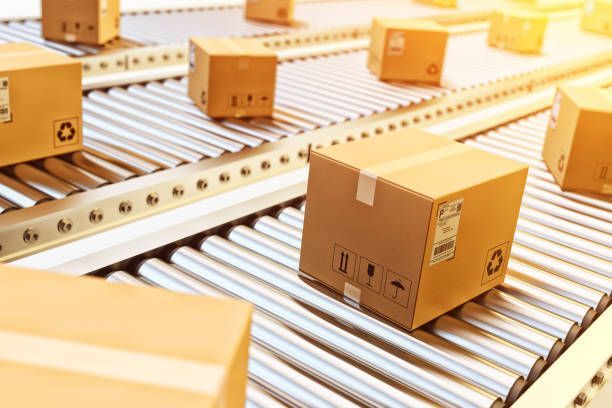
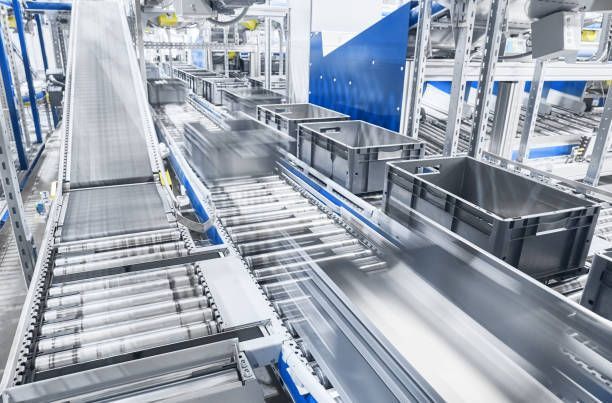
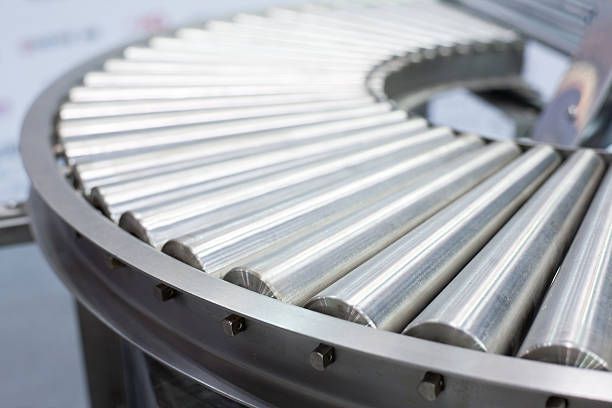
Location
2771 Katherine Way, Elk Grove, IL 60007
All Rights Reserved | Conveyor Systems and Engineering Inc.

